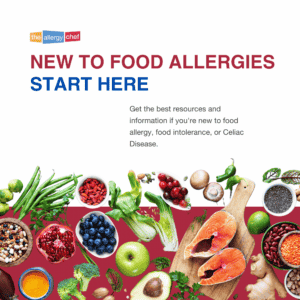There are a variety of reasons that may have led you to this page, and no matter how you got here: Welcome! Being diagnosed or managing someone with a food allergy is no easy feat. Today I’ll be sharing some of the BEST resources available with you to help you through the first stage of your diagnosis. From there, I’ll share information on food intolerance, Celiac Disease, a bit of my journey, and also answer frequently asked questions people have about food allergies. Buckle up, it’s a long read. Oh! And you’ll find even more resources at the end of the article.
New To Food Allergies… Help!
I’ve got you covered. Here are the best resources for you to learn more ASAP.
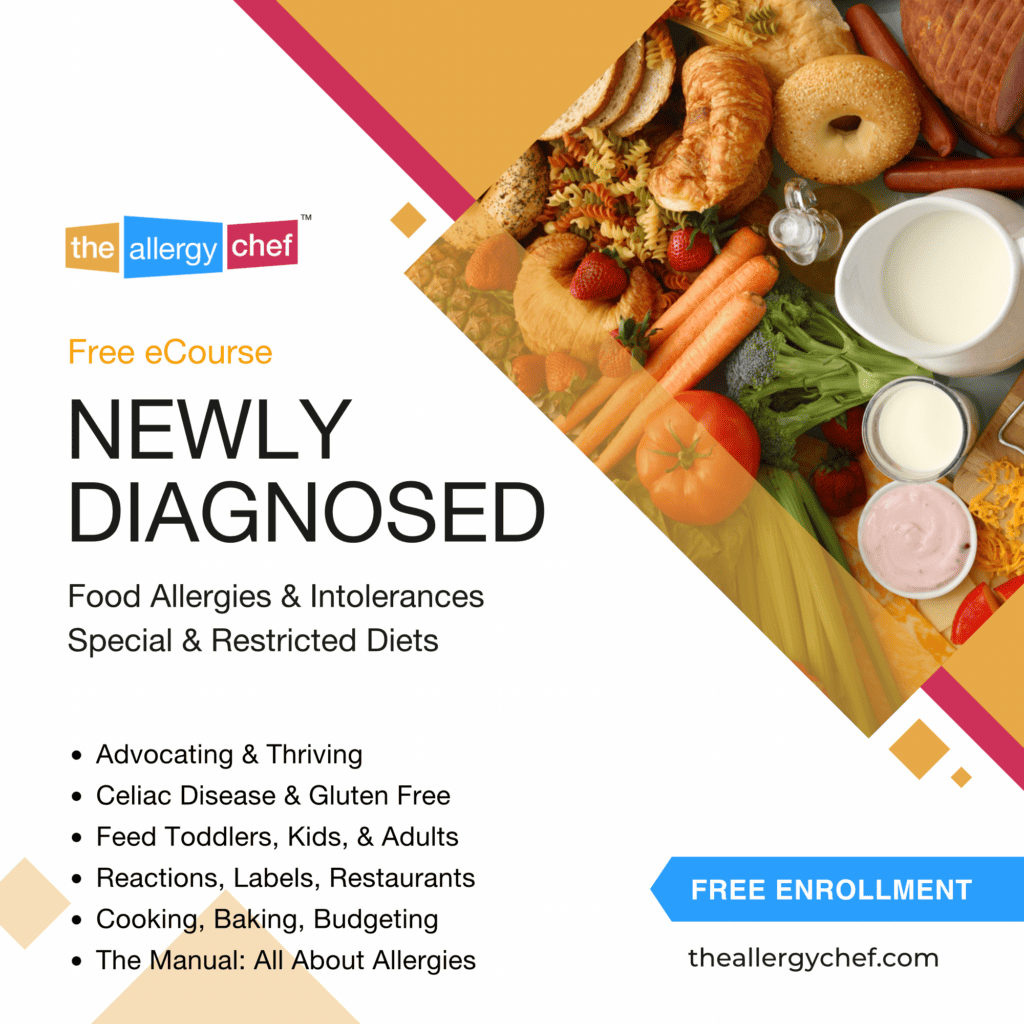 |
This Newly Diagnosed eCourse is a FREE course aimed at helping you thrive ASAP. You’ll learn a range of skills including how to shop and read food labels.One of the TOP perks of enrolling is The Manual, a free resource that’s everything you need to know on day one. |
 |
FAACT is an amazing resource for people with food allergies. They have amazing education tools you can share with your child’s school as well as advocacy support. |
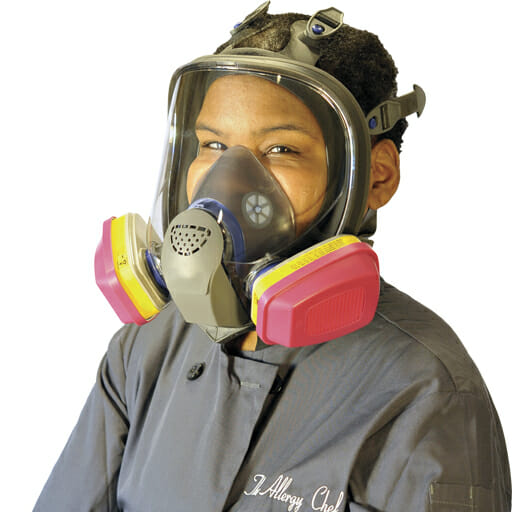 |
Hear The Allergy Chef online! Kathlena has been a guest on many shows ranging in heath, food, parenting, and more. These shows are all great to add to your list of favourite podcasts. Several of the shows focus on food allergies. |
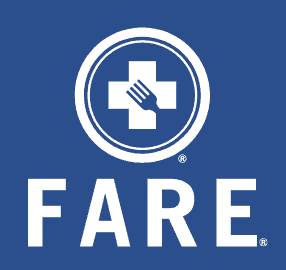 |
FARE is one of the leading organizations in helping people with food allergies. The have great clinical information as well as the annual FARE Teen Summit. |
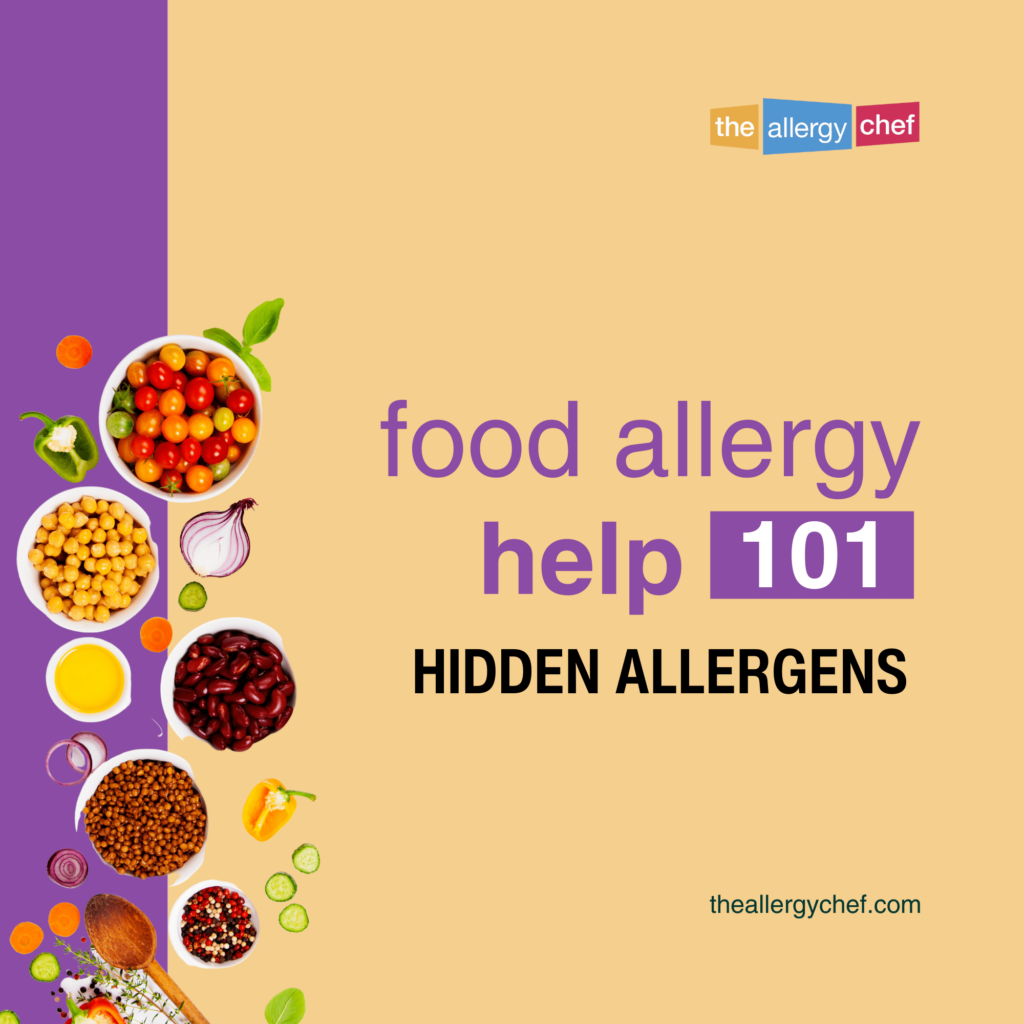 |
Food Allergy Help 101 Courses help you right away via email. Sign up for one of the many topics. |
 |
Milk Allergy Mom Support Group: Open to moms and dads managing all dietary restrictions! Jamie has created a warm and caring space for food allergy parents to share successes, seek help, and support one another. Jamie’s website also has recipes and resources. |
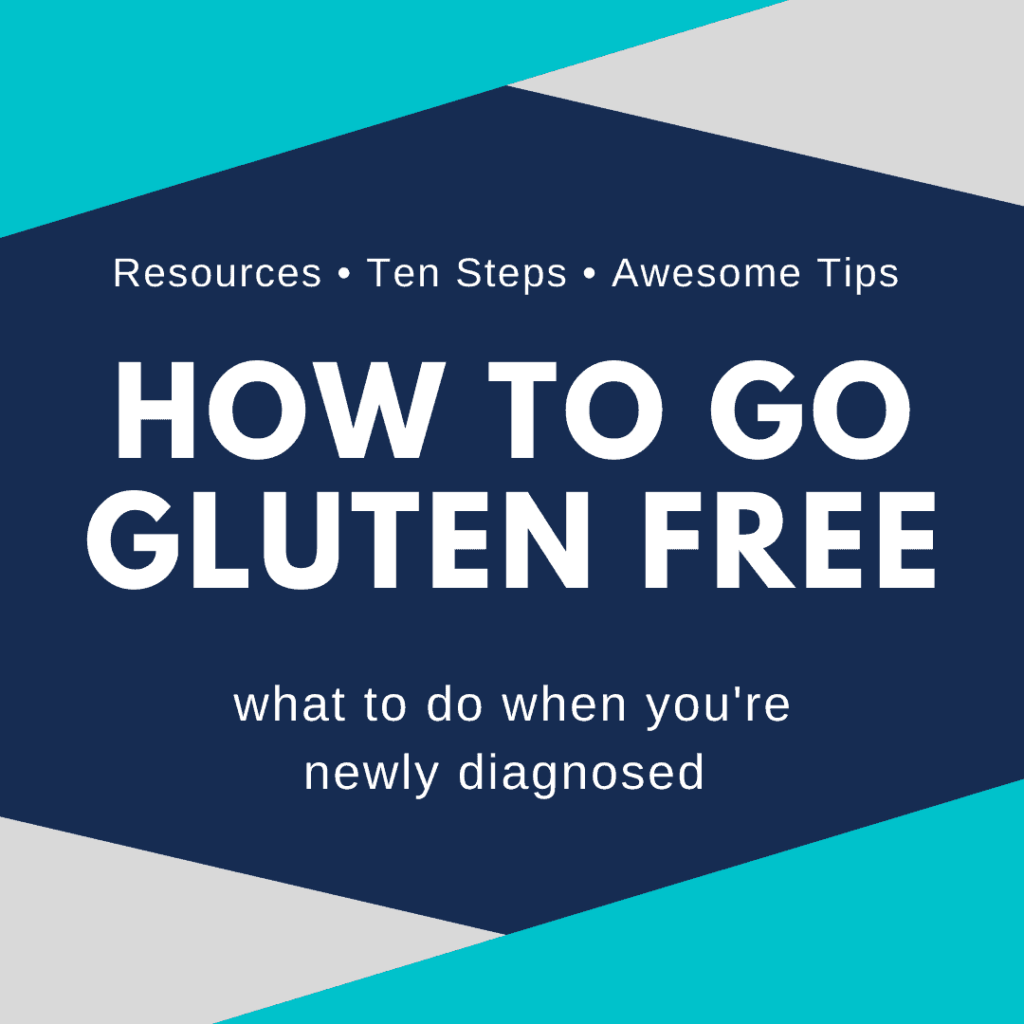 |
This is a fantastic read if you’re new to having a Wheat allergy, Celiac Disease, or Non-Celiac Gluten Sensitivity.Learn all about eliminating wheat/gluten, how to thrive, resources, and more. |
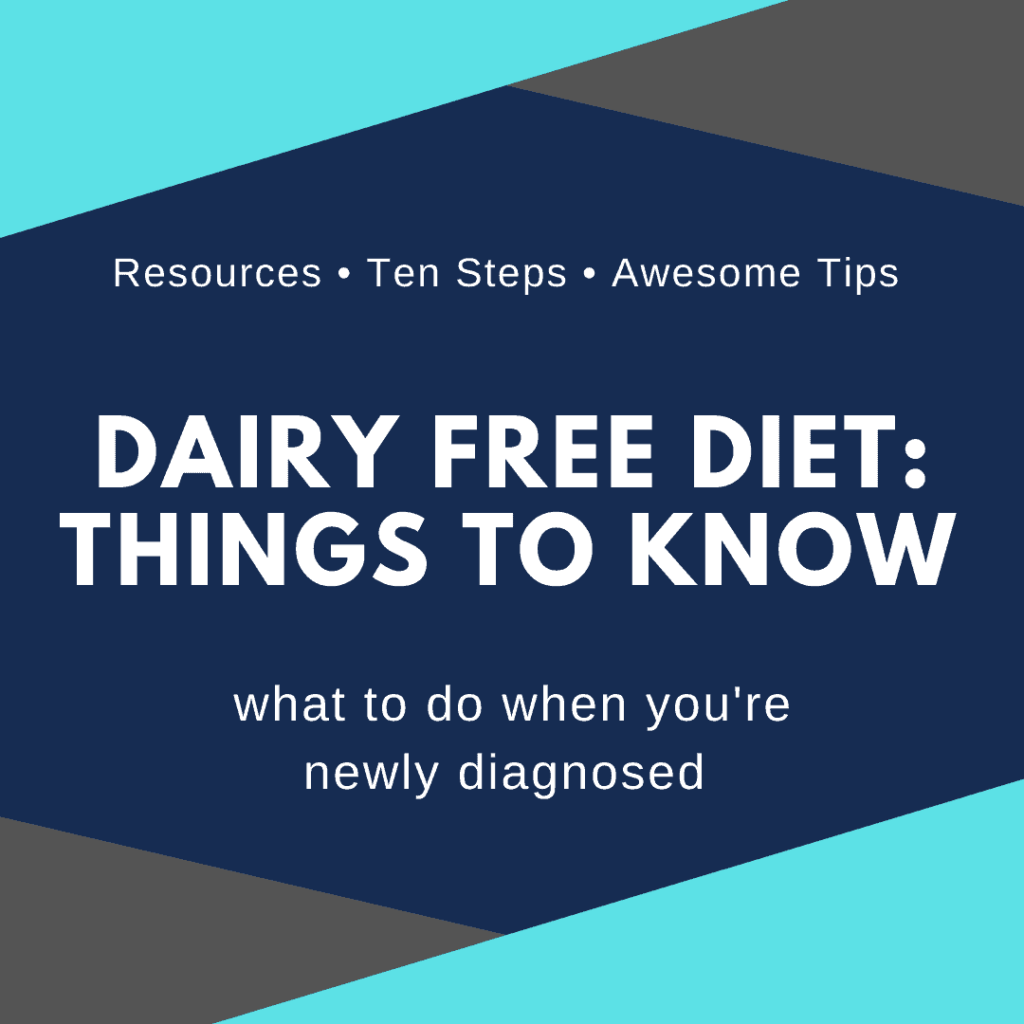 |
Milk allergy is one of the most common allergies and I’ve put together a great resource for you to better understand what it means.Removing all dairy is quite the process and the good news is that substituting for dairy in cooking and baking is a breeze. |
Hidden Sources of Allergens
These articles are each incredibly helpful and can help you understand how allergens are used in food and medicine. Click/tap the pictures to get to the article.
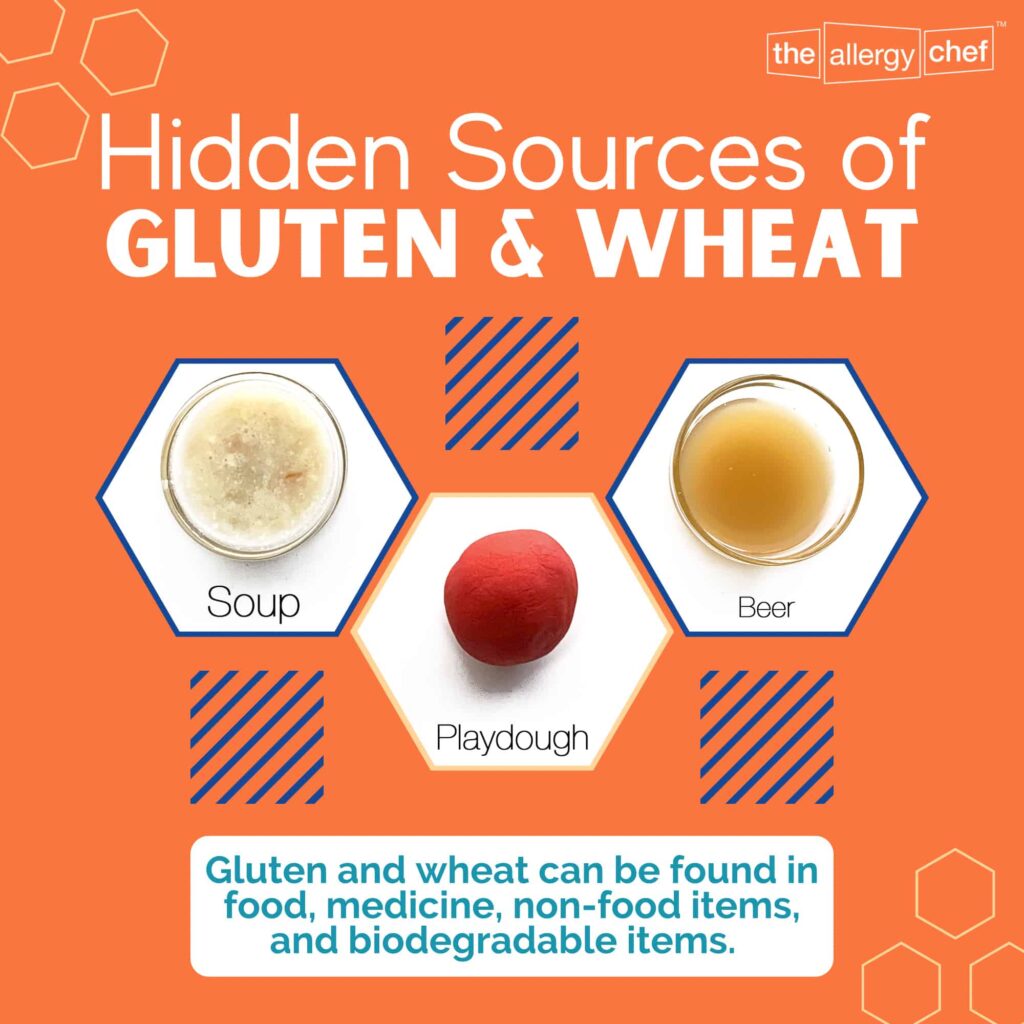 |
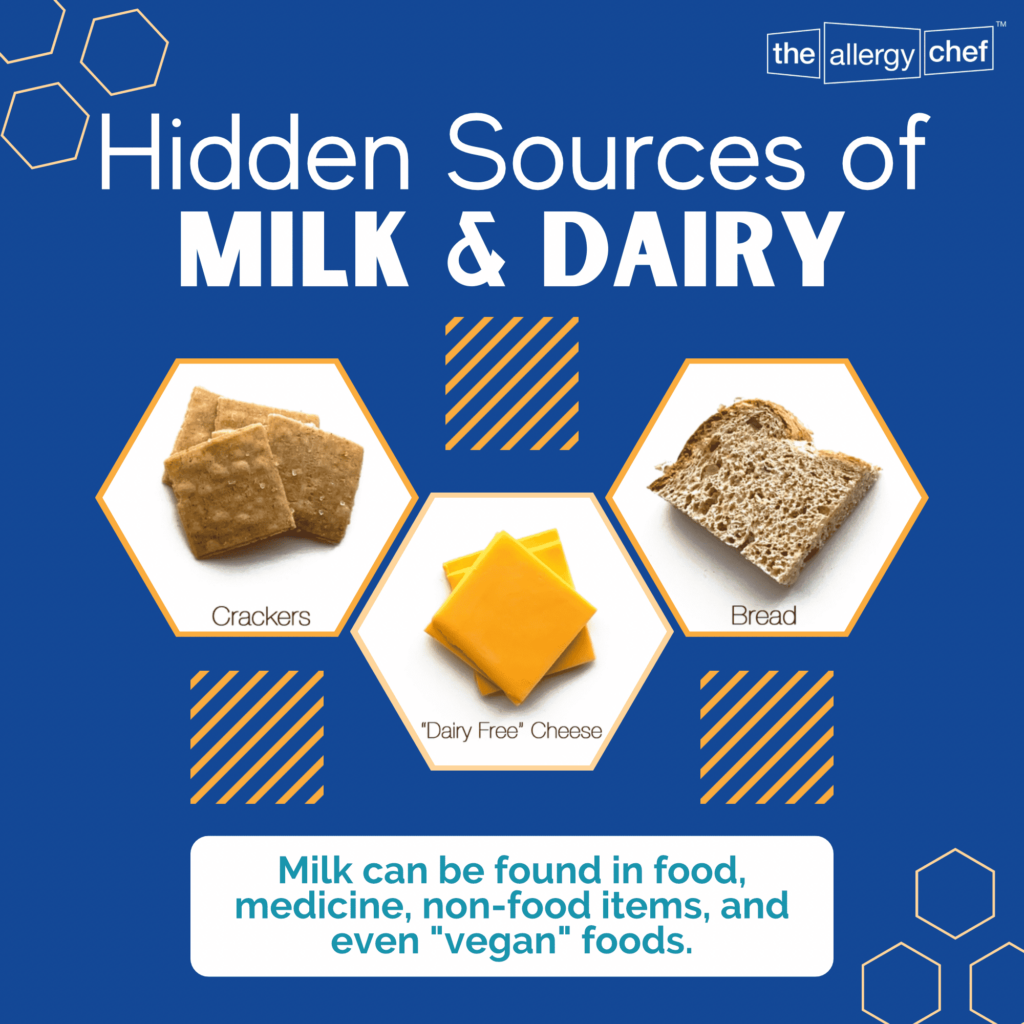 |
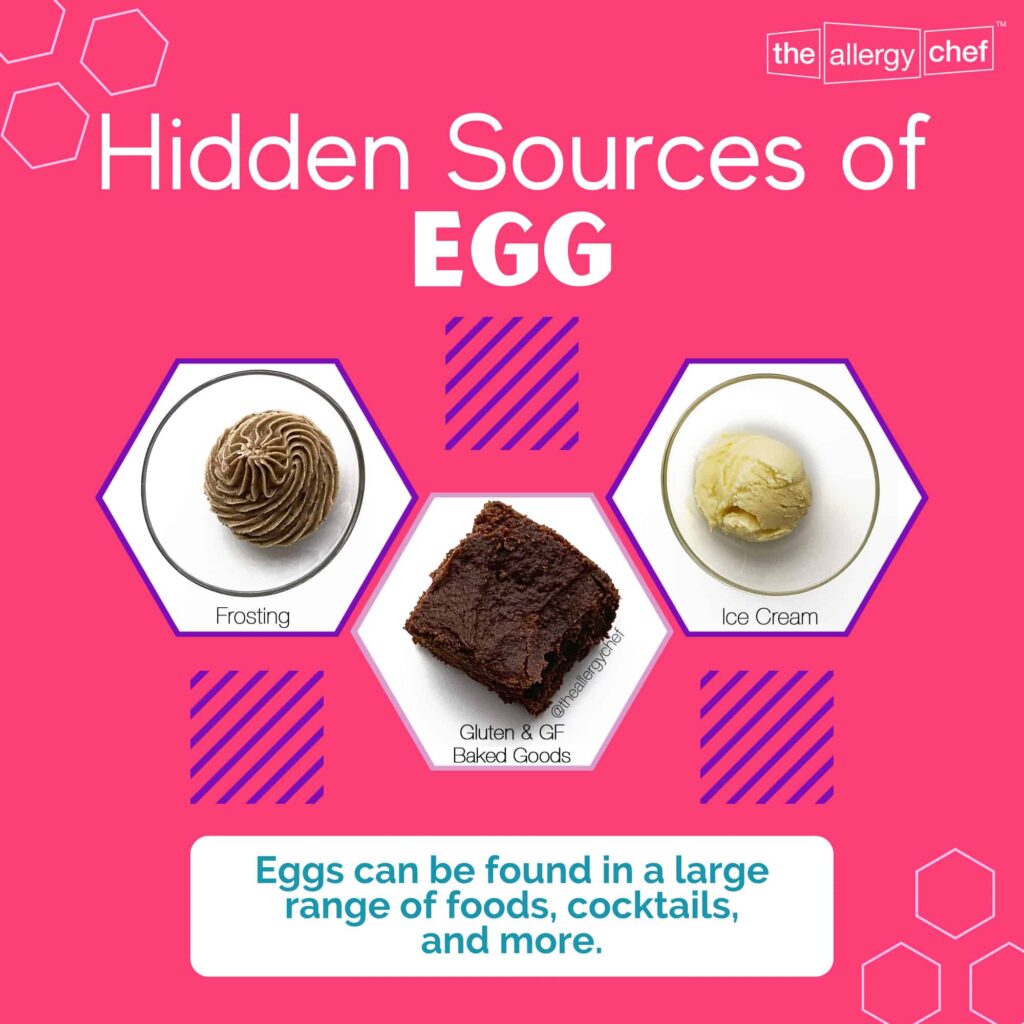 |
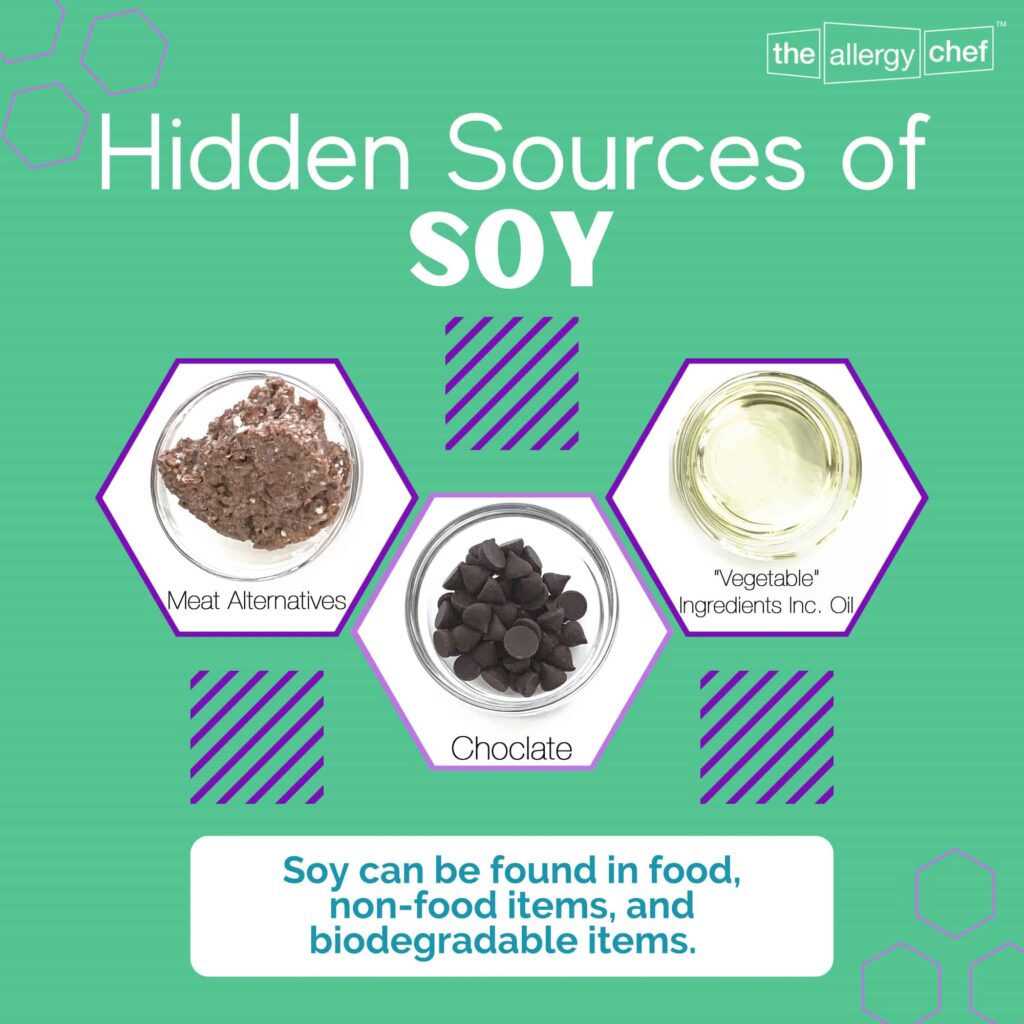 |
 |
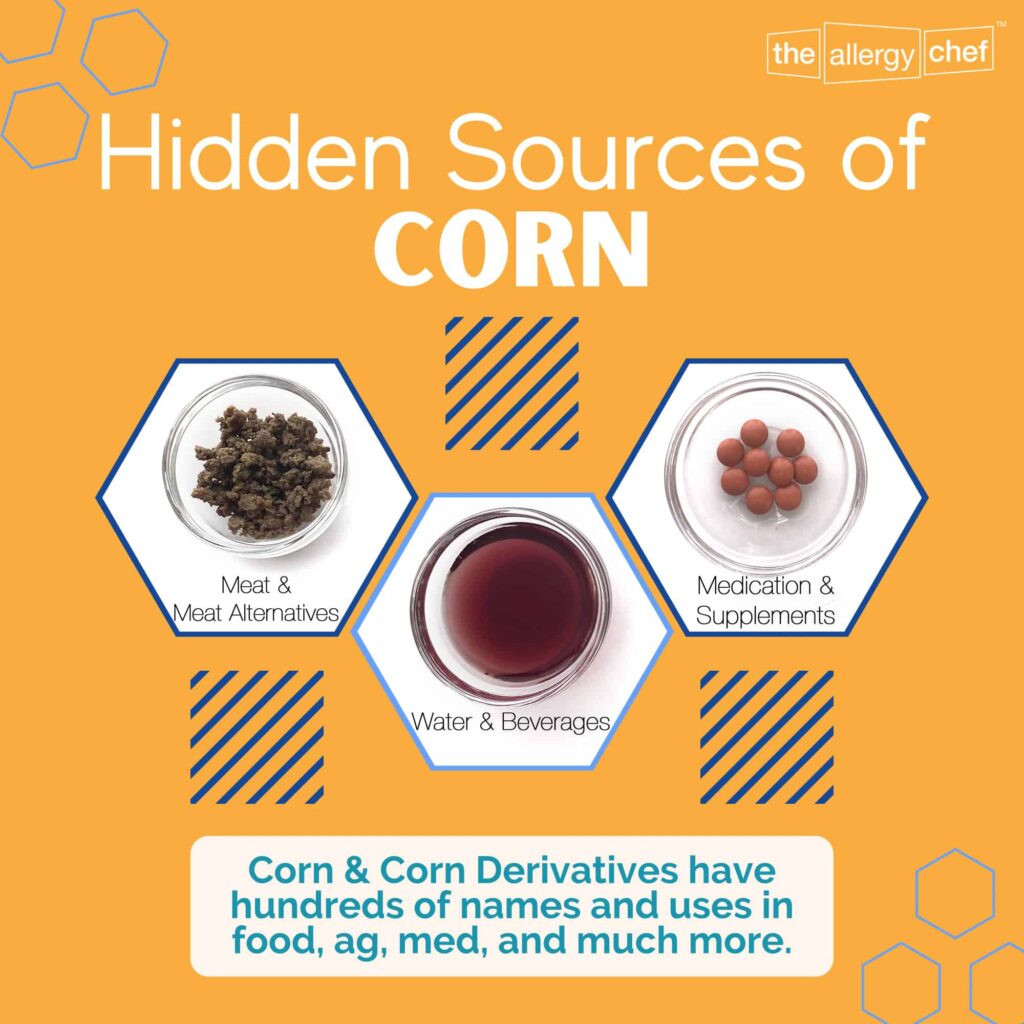 |
Food Allergy, Food Intolerance, Celiac Disease
Allergy, Intolerance, Celiac Disease (or other Autoimmune Disease) are all different. There are different mechanisms involved with each. The science is fascinating, really.
You can be born with or develop over time all three. For a lot of people, there is a genetic component, especially with Celiac Disease. Additionally, you can carry the gene but not have the expression. Annndddd for some people there is a reversible root cause (this is mostly true for people with a complex case, food intolerance, or non-Celiac autoimmune disease).
I’m going to always be a broken record about this: NO TWO PEOPLE ARE THE SAME. You have to keep in mind that your diagnosis, cause, and reactions are unique to you.
What is a Food Allergy
The super-generalized definition of a food allergy is a reaction to a food within a 4-hour window of ingestion. However, there are some more rare conditions that are a TRUE allergy that happen outside this window, or during digestion. Conditions such as FPIES can fall into this category.
If we’re being more scientific, the definition is a condition caused by an IgE mediated reaction to a food substance.
There are 5 Igs, and it is possible to have an adverse reaction to food due to non-IgE mediated immunologic and nonimmunologic mechanisms. This is one of the many reasons food allergy is misunderstood. It’s also important to know that:
NO TWO PEOPLE ARE THE SAME
Two people can have the same diagnosis and have completely different responses to food. The most severe reaction is anaphylaxis, which can lead to death if not treated. Anaphylaxis does not equate death in most cases. The use of an epi-pen and other life-saving interventions usually prevent death. Should you have a healthy fear? Yes. Should you allow that fear to cripple you and prevent you from living? No. Absolutely not, never ever should it stop you from living and enjoying your life.
What is a Food Intolerance?
The super-generalized definition of a food intolerance is that you can ingest a food and usually have symptoms 4 hours – 4 days later. In some rare cases, reactions happen up to 28 days later. In a lot of people, the symptoms are related to digestion.
NO TWO PEOPLE ARE THE SAME
Where an allergy has the potential to cause death, an intolerance itself cannot. You may end up with a rare set of domino effects that have you facing grave circumstances, but the actual food intolerance will not cause anaphylaxis. If your intolerance causes anaphylaxis, then it’s most likely an allergy, not an intolerance.
What is Celiac Disease?
Celiac Disease is one of many autoimmune disorders where the body attacks itself. Like an intolerance the actual Celiac Disease won’t cause anaphylaxis. However, left untreated, a severe case of Celiac Disease or even Non-Celiac Gluten Sensitivity can absolutely have you knocking at death’s door.
The only treatment for Celiac Disease is the complete avoidance of gluten, which is found in wheat, rye, and barley.
Symptoms of Food Allergy, Food Intolerance, and Celiac Disease
People often ask, what are the food allergy symptoms I need to look out for? I can tell you that for all three conditions, there are a VERY wide range of symptoms. I like to break it down into two categories: traditional and non-traditional.
The term traditional essentially means “based on available data, what’s more likely to happen, statistically speaking”. A traditional response means you’ve reacted how most people with a similar/same diagnosis do. Non-traditional is the opposite. Having this mindset and understanding is VERY helpful if you’re a complex case.
Keep reading to get a more in depth of what those reactions may look like.
Symptoms of Food Allergy That Indicate Anaphylaxis
Anaphylaxis is a potentially life-threatening allergic reaction to food. Life-threatening symptoms usually occur within 20 minutes of ingestion (often times within the first few minutes). However, in some people, the response can come up to 4 hours later.
Additionally, in up to 20% of those with a food allergy, they can have what’s called a biphasic anaphylactic reaction. This means that there’s a second wave of symptoms hours and even days after the initial symptoms have subsided. I have experienced this and it is SO not awesome.
The key symptoms involved in most cases of anaphylaxis include:
- Difficulty Breathing
- Reduced Blood Pressure (weak pulse, loss of consciousness, confusion)
- Skin Symptoms or Swollen Lips
- GI Symptoms (vomiting, diarrhea, cramping)
- Fainting
Severe symptoms generally involve the lungs, heart, throat, mouth, skin, gut, and brain. You can have a severe reaction in one of these systems, or a combination of systems. No matter how many systems are involved, it’s usually advised to use an epi-pen and seek medical treatment.
Mild symptoms are considered:
- Itchy and/or Runny Nose
- Itchy Mouth
- Mild Nausea or Discomfort in the Gut
- Itchy Skin or Small Amount of Hives
HOWEVER! If a person is experiencing mild symptoms in more than one system at the same time, this is considered a more severe response and it’s usually advised to use an epi-pen and seek medical treatment.
Examples of Food Allergy and Food Intolerance Symptoms That Are Not Anaphylaxis
I could personally list out well over 150 symptoms that I’ve experienced that are not anaphylaxis. They range from head to toe, inside and out. It’s actually easier to say this: anything that causes pain and/or discomfort and/or dysregulation due to the ingestion of a specific food AND is not a symptom of anaphylaxis is a symptom.
In other words, if your body responds negatively to food, that’s a symptom and it should not be ignored. Just because a reaction isn’t anaphylaxis doesn’t mean it’s safe to continue eating the food. We’ll talk more later about ongoing exposure. A few examples include:
- Migrane/Headache
- Excessive Throat Clearing/Coughing
- Joint Pain
- Swelling of Hands/Feet
- Lethargy
- Post Nasal Drip
- Small Rash
I Like to Use the Term Complex Case…
In my world, complex case is a term used to indicate that someone is outside the normal range of response. Think of the bell curve. The term also usually indicates that the diagnosis has been a long/difficult road. This could be because your symptoms are mirroring other diseases such as cancer, or it means that you have yet to find a specialist that can help you effectively. You may also have Mast Cell Activation Syndrome (MCAS), which is hard to diagnose, or a histamine intolerance. Also, for some people, because the symptoms are not quick and obvious, doctors aren’t thinking food allergy.
Let’s not forget: NO TWO PEOPLE ARE THE SAME
I want you to think back to science class when you learned about controls and variables. With all three of these conditions we’re discussing today, it’s nearly impossible to have a true control and true variable, which makes the diagnosis of a complex case so much harder. In a strange way, there aren’t enough identical twins where one has a food issue and the other doesn’t to study. ID twins (who volunteer because ETHICS) are the ultimate way to understand the science behind it all.
Without that data, we’re going on what patients self-report. A diagnosis can be hard to nail down, especially if your labs come back “looking normal” yet you have all these symptoms that point in five different directions.
OK, I’m totally digressing now. Let’s get back on track.
Having any of these three conditions is not the end of the world. The first step in all three: avoid the trigger foods. Doing this will eliminate symptoms. If symptoms persist, it’s most likely 1 of 3 things:
- Incomplete Diagnosis
- Wrong Diagnosis
- You’re not sourcing truly safe food (as in shared equipment et al.)
When a Root Cause is Involved
Where there’s a root cause, there’s a possibility of reversing some or, possibly, all of the issues. Leaky gut and toxic mold exposure are the two most common examples of a root cause. Depending on the person, some people are able to reverse some of their MCAS symptoms, and symptoms related to food intolerance.
Determining and addressing a root cause is a LOT of work. It’s also usually expensive. There are specialists you work with who have experience to address your specific needs and you may need to work with a lot of them until you find the right one.
Also, it’s important to remember that both East and West medicine have a place in the world. Most people who work on root causes are working with East/Holistic practitioners. Western medicine in my humble opinion is AMAZING for emergencies. Have a heart attack? Please don’t hit the essential oils, but go to the ER. Have chronic health issues? A pill to mask symptoms may not be in your best interest in the long run.
But again, NO TWO PEOPLE ARE THE SAME.
Can a Food Allergy be Cured Completely, or, Can food Allergies be Cured Naturally?
First, there’s no such thing as a cure for true food allergies. If a person goes through Oral Immunotherapy (OIT), upon successful graduation they’re said to be “in remission”, not cured. If a person outgrows a true allergy, we say they “outgrew it”, not that it was cured.
Tolerance is not the same as a cure. With allergy (and sometimes intolerance) you’ll learn about TIP, OIT, etc. These essentially “train” the immune system to stop responding. YOU CAN LOSE YOUR TOLERANCE. I’ve heard from countless people who went through programs to gain tolerance only to lose it later (in some cases they didn’t manage their maintenance doses, in others, poof, tolerance was just gone).
Some people have all the success in the world with OIT, and others never get past the first dose. NO TWO PEOPLE ARE THE SAME.
Since there is no cure for a true food allergy, no, by definition it cannot be cured naturally. I don’t want to give false hope here. However, there are countless numbers of people who have focused on gut health and underlying root causes who have been able to put some or all of their allergies into remission. It’s going to depend on the person and their unique diagnosis.
Is There a Cure for Celiac Disease?
There is no cure for Celiac Disease. The “cure” is to remove gluten and all traces of gluten from the diet. Period. Hard stop. Do not pass go, and put down that $200.
A Few More Quick Thoughts on This Topic
Whilst some people outgrow their allergy, on’t bank on it. Live like this IS your life and ENJOY each day. Do not sit and hope/wait for the day your child outgrows an allergy. It may never come. Instead, make life and food awesome.
Yes, you can develop a new allergy/intolerance at any time.
There is some merit to the 7 year cycle. Very interesting research.
Yes, there are downsides, but the biggest silver lining: most people end up eating way more healthy because they need to cut out most/all packaged food stuffs.
Finally, as someone who has lived through a lot, please, for the love of all that is good and true in the world, do not experiment on children or non-verbal people. They can’t tell you about delayed reactions and so many other important details. Food trials to known allergens should to be done with FULLY INFORMED CONSENT.
Fully Informed Consent
One man shared that he was horribly allergic to pineapple and his mom would feed it to him every so often “just to check if things had changed”. He was miserable. He had no say in the matter. That. Was. WRONG.
Remember, do YOU want something done TO you or WITH you? People like to think that informed consent applies to adults only, but I’m going to have to disagree. As someone who had a miserable childhood due to food, I can tell you first hand: THAT SHIT HURTS. Don’t knowingly torture someone else. Not cool.
What Does Fully Informed Consent Look Like?
First, the child is old enough to truly comprehend what’s going on. 8 – 10 years old is usually the right age range. Explain the science to the child, what their options are, and ASK if they would like to try xyz. Some kids are on board, and even push for it themselves. Other kids want nothing to do with it.
When Kid Two was 14, I started talking to him about OIT, mainly so he knew it was an option. He also knew the difference between an allergy and intolerance (he has both). He’s NEVER once wanted to try anything related to allergy shots, OIT, or food trials. I had the conversation with him many times, and did it without emotion or bias, just so he knew the door was always open and that he could change his mind. He doesn’t want it, not even as an adult.
My suspicion: the kid KNOWS anaphylaxis. He doesn’t want to go through that trauma again.
I don’t blame him, and I respect his choice. Even as an adult, he still doesn’t want to try anything, and that’s totally OK. He knows he can change his mind. He has thought about experimenting with his food intolerance, but even then, he still doesn’t want to deal with it. I totally don’t blame him.
Common Questions About Food Allergies
So, here’s the thing. I’ve given you the BEST resources at the start of this article. Those resources are designed to get you amazing information from reliable sources. Now, I’m going to answer common questions people have about food allergies. You may already know the answers to some of these questions which is great. If you’re new, remember, there are no stupid questions, and it’s much better to ask than walk away wondering.
What is the First Step of Treatment in Food Allergies?
The first step of treatment upon a reaction or even suspicion of reaction is to STOP eating the food immediately. Next, you will want to work with your medical team to determine what’s going on.
If you find that tests are inconclusive, here’s the bottom line: if a food or beverage causes a negative response in your body, don’t eat it.
In some cases, a detailed food journal is going to be key in determining what the trigger foods are.
Can You Overcome Food Allergies by Exposure?
What you’re referring to is called Oral Immunotherapy, or OIT. It’s a hyper-controlled program done by a board certified allergist aimed at retraining your immune system. Remember, there’s no such thing as a cure. With OIT, the goal is tolerance, or remission.
OIT, TIP, and other tolerance based programs are not a good fit for everyone. Additionally, some people go through the program successfully, and even with maintenance doses, are unable to maintain tolerance.
What this really means is what I’ve been saying throughout this article: No two people are the same. You’ll need to work with your medical team to see if this could be a good treatment option for you and if not, you’ll need to adopt a free-from diet and lifestyle.
Is a Food Allergy Considered a Disability?
Yes and No. Yes, a food allergy is considered a disability and you are covered by the American’s With Disability Act (ADA) here in the United States.
No, most people don’t recognize a food allergy as a disability the same way they would when seeing someone in a wheelchair.
Personally, I see it as both. It absolutely can limit your options in life, is an ongoing medical condition with no cure, and requires extra time/energy/money. In that sense, it’s a disability, or invisible illness to me. On the other hand, I want everyone living with a restricted diet to be empowered and know that we can do everything and have almost any food we want (elbow grease required).
I also don’t want people to get stuck in the mindset of “I’m disabled” and somehow limit themselves. How you see it will be up to you, but just know that the ADA has you covered and you shouldn’t be facing discrimination based on your food allergy.
How Can You Calm an Allergic Reaction to Food?
This is going to depend on the person, the reaction, and their unique action plan. When you’re diagnosed with a food allergy, many patients work with their medical team to create an allergy action plan, and are prescribed an epi-pen. Their plan lets them know when to use the epi-pen and what other steps to take.
For some people, their action plan includes the use of an anti-histamine, which is designed to “calm” an allergic reaction.
It’s important to know that past reactions don’t dictate/predict with certainty what a future reaction will look like. In some people, with each exposure, the reaction comes on faster and/or more severe. When in doubt, use your epi-pen if you have one and seek medical attention ASAP.
If you are managing a child, please know their plan inside and out, and, when in doubt, use the epi-pen and seek medical attention ASAP. Children can’t always communicate everything that’s going on and it’s much better to be cautious than live with regrets.
What to do if I Ate Something I’m Allergic To?
This is going to vary person to person. Let’s start with the worst case scenario: you ate a food that you thought was safe. You go about your day and you’re feeling off, and it’s only getting worse. You are most likely having an allergic reaction and need to seek help ASAP.
In a situation where you ate the item and know right away, you can monitor yourself, or ask someone else to help with this. If you aren’t seeing signs of anaphylaxis, and your action plan includes anti-histamines, this would be a good time to take them. Continue to monitor yourself until symptoms have ended. If at any point you’re experiencing symptoms related to anaphylaxis, seek help ASAP and use your epi-pen if you have one.
Another scenario is that you have had anaphylaxis reactions in the past and eat something without knowing the allergen is present. After a short while, you “suddenly” feel an onslaught of unexpected symptoms. Use your epi-pen and seek help ASAP. Given your history, it’s best to act with the upmost caution.
Should you ingest something that causes a very mild reaction such as a headache, you’ll need to decide what the best course of action is. I will say this, if you’re new to food allergies, please don’t ever hesitate to get help ASAP. It’s better to seek the help and not need it, than to not realize you need the help until it’s too late.
How Long Does a Food Reaction Last?
This varies by person. I know, it’s not the answer you want to hear. Some people bounce back within a few hours. For others, it’s weeks before they’re back to 100%.
If you’re curious as to how food affects you, keep a detailed food journal. This will allow you to track in detail what’s going on and identify any patterns/trends that may be present.
To give you a couple of points of reference, the few times Kid Two has experienced anaphylaxis, he sleeps for about 12 hours after, then is back to 100% within another 24 hours.
I on the other hand, take 3 – 6 weeks to recover from major allergic reactions.
Delayed Allergic Reaction to Foods: Is That Possible?
Yes, absolutely yes. Remember that no two people are the same. Secondly, remember that there’s a 4-hour window for food allergy. If you eat the food at 12pm and have the reaction at 3:45pm, one could consider that a delayed reaction. Furthermore, in cases where the response happens in the GI tract, or in FPIES, it could be 12 hours or longer in some cases before a reaction happens.
On top of that, it’s not uncommon for a child’s very first allergic reaction to happen on the second or third introduction of a food. Keep that in the back of your mind, and it’s also why introducing new foods one at a time is advised for young children. This allows you to make sure they really can consume the food safely.
In some people, especially with food intolerance, they have a threshold. This means a certain amount (or more) of a food needs to be eaten before a reaction is seen. In others, they have what’s called a build-up reaction. As they continue to eat a particular food throughout the week, reactions start small (and may be easy to ignore) and by the end of the week they’re in severe pain.
You know the drill: no two people are the same. This is also why a food journal can be very helpful, especially with a complex case, non-traditional reactions, or those with a food intolerance.
Delayed reactions should never be ignored. It’s also why it’s important to keep this in mind if you’re working through oral challenges with your medical team. If they have you in the office from 12pm – 4pm and you pass, but at 8pm you have a severe reaction, it’s not a pass. It’s a delayed reaction. Based on the limited data I’ve collected, it seems to be a lot less common to have a delayed reaction that’s also anaphylaxis.
Are There Long Term Affects of Eating Food You’re Allergic To?
I’m so glad you asked! Yes, there are indeed long term affects of eating food you’re allergic to. The long term consequences will vary person to person. Here are a few examples for you because as I say often, there isn’t a lot of data or studies of large amounts of people. These are all true stories by the way.
Example 1: A lady reports that she is allergic to 5 foods, and continues to eat them. She suffers daily from brain fog, fatigue, sleep disturbances, headaches, and general bod aches. She also says, “It’s fine, the food isn’t bothering me”.
As a third party, it’s easy to see that the food is indeed bothering her with reactions that aren’t anaphylaxis. I know that her quality of life could improve, but it won’t because she sees it as “too hard” to give up these foods.
Example 2: A child is eating regular amounts of food and gaining weight at a somewhat alarming rate. This child is active both in school and after school through various sports. After numerous tests, it was determined that the child had an undiagnosed food allergy.
In this case, the parents removed the food and the child not only lost the excess weight, but saw improvements in other areas of life.
Example 3: A child has a list of foods they’re allergic to, and the parents have been told by the doctor to continue feeding the foods to the child because “the levels aren’t so bad”. The child has regular meltdowns at meal times, refuses to eat, and is getting closer to failure to thrive.
In this case, the parents did not have food allergies and had no first hand experience. They relied on what the doctor told them. Upon receiving conflicting advice (eliminate the allergens) the parents were unsure of what to do.
I could tell you hundreds, if not thousands of these stories from people I’ve met through my work. In addition to all of their stories, there’s my personal story along with Kid Three. Both highlight the devastation of ongoing exposure.
So yes, there are long term effects, AND, depending on what kind of effects you have, even after removing the foods, you could still have long term health issues.
Keep this in mind as well. A person who is in constant pain cannot function well. If you manage an undiagnosed child, they may miss developmental or educational milestones because their body is too busy fighting an internal battle and has nothing left to give for growth and development.
How Do People Live With Food Allergies?
Freely, deliciously, and cautiously. Let’s take a deeper look at that.
First, it’s so important to not let a diagnosis of food allergy, food intolerance, or Celiac Disease stop you from living and enjoying life. There’s still a lot of things you can enjoy that don’t need to include food.
Secondly, safe and delicious food is ABSOLUTELY still on the table. On RAISE, I made it a point to prove that fact. Use the Advanced Recipe Search which has more than 85 filters to SEE all the amazing food you can still have. In fact, the 500+ recipes are all free from: wheat, gluten, egg, dairy, sesame, lupine, and more.
There’s no reason why your diagnosis should prevent you from still enjoying food. I personally have 9 safe foods and eat cookies, cake, muffins, ice cream, steak, and lot more. It’s all about getting creative and applying some much needed elbow grease.
Finally, there’s cautiously. Yes, you’re going to buy special food and call companies. You’ll go through life wiping down surfaces, asking a lot of questions, and perhaps bringing your own safe food to a restaurant.
Food is part of life and you need it to survive. You’ll have to adapt and make changes that feel impossible at first but once you get the hang of it, you’ll see that life is still awesome.
If you need more help on HOW to live safely with food allergies, RAISE has a library of Allergy Seminars to help you on your journey.
Further Reading & Resources
- 1 on 1 Consultations with The Allergy Chef
- Conquering Food Fear When Living with Food Allergies
- Glossary of Terms: Allergy, Diagnosis, & Medical Terms; Definitions
- How To: Manage a Mixed Allergy Household
- Food Journaling
- Allergy Seminar Series: Diagnosis Journey (for non-traditional and complex cases)
- Food Rotation Guide
- Allergy Seminar: Introducing New Foods to Toddlers with Food Allergies
- Allergy Seminar: Introducing New Foods to Kids & Teens, and Helping Them Cope

